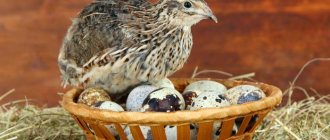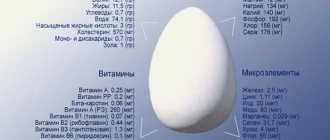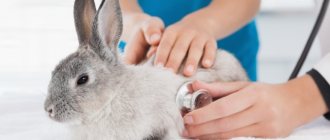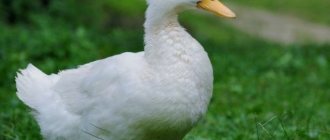Main reasons
Here are the main factors that have the greatest impact on egg production.
Quail laying hen
Lighting and optimal daylight hours
To maintain high egg production, you need to strictly adhere to a specific light regime. For quails, the duration of daylight hours should be between eighteen and twenty hours. On my farm, the total daylight hours have been twenty hours for many years now. However, this time is divided into certain stages:
- from six o'clock in the morning until midnight the lights are on;
- then a break from 24 to 2 hours;
- at 2 it turns on again until 4;
- at 4 o'clock it turns off again until 6;
- then again in a circle.
To put it simply, the nightly four hours required by quails are divided into 2 parts with an interval of two hours. This is necessary so that the quails do not starve at night.
Laying quails have a fairly high metabolism and if they are left without light for four hours, they may become hungry, and this will negatively affect egg production. When the light turns on at night, the quail has the opportunity to have a little snack and again have 2 hours of rest.
An incorrect statement - that quails do not require night rest and the light can be on around the clock can lead to the fact that laying hens will gradually begin to become exhausted, and you should not expect good egg production from such individuals.
In turn, quails are also negatively affected by too bright light, since these birds are accustomed to living in dark places. When organizing lighting for your feathered pets, proceed from the calculation of 4 W per square meter. This is very important, because in very bright lighting, the bird behaves restlessly and even aggressively, and pecking fights become more frequent. Note that to prevent cannibalism in a quail flock, it is necessary to use cages that have shaded areas so that calm individuals can hide in them from aggressive ones. This can only be done in a cage that is lined on 3 sides. If the cage is made entirely of mesh, then such conditions cannot be ensured.
Temperature
Quails are heat-loving birds, but heat is contraindicated for them. If they do not lay eggs well, it is recommended to adjust the air temperature in the house.
At a temperature of 30 C, laying hens stop laying eggs. When the temperature increases by 2 degrees, the quail may die. Do not sharply reduce the air temperature in the room. This will be a stressful situation for the bird. Changing the regime should be gradual.
More on the topic: How do quails live in an apartment?
Igor Nikolaev
auto RU
If the indicators are too low, individuals may suffer from respiratory diseases. If the temperature reaches 13-16 C, then the quails stop laying eggs.
It is noted on the forums that females of the Japanese and Estonian breeds lay eggs at 13 C, but this is rather an exception to the rule. The optimal thermal regime for laying hens is 20-24 C.
Video “Organization of lighting”
This video shows how to organize lighting in a room containing cages with quails.
Sudden changes in temperature
The best temperature that must be maintained for quails to lay the maximum number of eggs is 20 - 22 degrees. In emergency situations, short-term fluctuations of 18 to 25 degrees are acceptable. It has been noticed that if the temperature drops below 17 degrees, then the egg production of quails drops by more than 10%. These regimes must be maintained in cells where quail livestock are kept.
Digital Thermometer
If you keep quails in cages that are made entirely of mesh, then this temperature must be maintained directly in the entire room where they are located.
In the summer, when the temperature rises above 27 degrees and with insufficient ventilation, egg production may stop altogether. If the temperature rises even higher, this can lead to the death of your charges.
In particular, with the hot season, almost all quail breeders are concerned about the question of what needs to be done to reduce the temperature in cages closed on 3 sides. The most effective and inexpensive way is to install one or more conventional fans. They will blow air into closed cells during hot weather, providing a flow of fresh air through the cells. According to many reviews, those quail breeders who practice this method do not die from overheating.
Low humidity
It is advisable that the humidity in the room in which the quails are kept is at least 30 percent. Otherwise, they will constantly be thirsty and eat poorly. To summarize, we can say that the less a bird eats, the worse it will lay eggs. If the cages are of a closed type, then the humidity in them is maintained naturally, but in cages made entirely of mesh, special attention must be paid to the humidity in the room in which they are located. With prolonged low humidity, the bird does not lay eggs well and the feathers become fragile. In order to increase the humidity in the room, you need to place containers with water and periodically moisten the floors.
Humidity measuring device
In turn, humidity should not be allowed to rise above 80 percent.
Wrong diet
An incorrectly formulated diet is the most common cause of deterioration in egg production. Quails can completely stop laying eggs just a few days after giving them unbalanced feed. This is very dangerous, since in order to restore normal egg production it will take both effort and time.
Home made food
If you notice that the size of the laid eggs has become smaller, then this is an indication that there is little protein in the feed.
Quails need to be fed 2-3 times a day, preferably with dry combined feed. Feeding with wet mash is also acceptable, but many breeders do not recommend doing this all the time. Primarily because wet food tends to turn sour quickly. Overfeeding hens can also negatively affect egg production.
Improper drinking
It has long been established that 3/4 of an egg consists of water. The conclusion suggests itself: in the absence of water, the bird will not be able to lay an egg. In females, 1 part of food is 2 parts of water, in males it is approximately 1.5:1. But these are approximate data, since they depend on many side factors, for example, the room temperature. But the main thing is that the quail in the cages or houses in which the quail are kept must have water at all times. Interruptions are unacceptable! For drinking, you can use any design, both nipple and cup or tray. Most modern poultry farmers prefer nipple ones due to their simplicity and hygiene.
Nipple drinkers for different types of birds
Bird stocking density
An important factor influencing egg production is the bird stocking density. You need to know that overcrowding and too bright lighting can provoke cannibalism. As a result, there is no need to try to keep too many birds in one cage.
Overcrowding in a cage
The norm is no more than seventy individuals per square meter. It is also recommended to keep no more than 35 individuals in one cell. From this we can conclude that one quail family should number up to approximately 35 heads. Having carried out simple calculations, we determine that the floor area of one cell should be equal to 0.5 m2. Some may not agree why divide the cage like this, since you can make a cage, for example, with an area of one square meter and keep, for example, seventy quails in it. It is possible to do this, but it is not recommended, since you will have to increase the number of males who will constantly compete for females and start fights. Let us remind you that there should be one male for every five females.
Age
It has been noticed that quails can lay eggs uninterrupted for 1-2 years. But it is economically feasible to keep a quail to lay eggs for about ten months from the moment the first egg was laid, or 1 year. After one year of age, the quail continues to fly, but with less intensity and consumes the same amount of food as in the first year. In addition, after a year the size of eggs laid decreases significantly. There are several other arguments in favor of annual livestock renewal. First of all, this is a deterioration in the quality of the meat of the quails themselves and the susceptibility to various diseases of individuals older than one year.
Eggs of different sizes
Stress after transportation
Birds love a calm and moderate life, and only under such conditions do they gain weight well and fly. But if the bird has experienced stress, then its life cycle is disrupted. This is one of the answers to the question, why did the quail stop laying eggs? Let's say you purchased birds from a good farm, where they laid eggs well. But after transportation, they may lay poorly or may not lay a single egg in the first days. This is not surprising and even normal. After transportation, quails should calm down and adapt to their new home and new conditions. Usually the adaptation period lasts no more than two weeks. It is also worth knowing that birds experience stress not only during transportation, but also when being transferred from one cell to another or when moving the cage to another place and stop laying eggs. That is, when keeping quails, try to disturb them as little as possible.
Shedding
After the end of the productive age, molting begins and the quails stop laying eggs. Various ways to influence this process have been invented, but they are more suitable for large farms. In private farms, it is preferable to update the herd.
Identifying quails that are not laying eggs
There is no need to worry about the egg production of young individuals - they all lay eggs, even meat breeds.
After all, for birds, laying eggs is a way of reproducing them. It’s another matter when you have laying hens of different ages in your cage, and some of them have gradually lost this function. To avoid such problems, experts, as we mentioned earlier, recommend updating the entire livestock annually.
When there are 10 individuals in a cage, and they do not lay a stable 8 - 9 eggs per day, then it is time to cull. To identify a “defective” laying hen, you should carefully examine its oviduct. It should be:
- clearly visible;
- wide;
- not wrinkled in the form of a barely noticeable ring.
Yes, and by its appearance you can also understand that the quail has already “spent out” - it will clearly be different from its flowering comrades.
We looked at the main reasons why quails stopped laying eggs altogether. They can be of a domestic nature (poor care, unbalanced food) or psychological (stress).
Remember the main thing - a healthy quail will lay eggs, but nothing should distract it, it is not scared or irritated. Birds strive to lead a calm and measured existence, and no stress should disrupt their life cycle. Even moving a cage from one place to another or transplanting a quail from one cell to another is already a terrible hassle for them.
Well, if you become ill, or if it is impossible to determine the reason for the decrease in egg production in your particular case, you should definitely seek help from a specialist. A veterinarian will help identify the disease, and more experienced poultry farmers will help solve problems with care or feed.
What to do if egg production has decreased?
Probably, when you have become familiar with the reasons described above for the decrease in egg production, you can determine why your feathered charges began to lay fewer eggs. It will also be easy to develop a program to correct the situation.
First of all, pay attention to the food you give your bird. It is quite possible that they lack some important elements, vitamins and minerals.
It is necessary to use specialized additives, which are sold in many veterinary stores and increase the egg production of birds.
For all quail farmers, it is a big problem that feed for their animals is not produced by our industry. Sometimes you can order it to be prepared according to your own recipe at the enterprise, but this is rather an exception. Typically, factories do not take on small orders. Therefore, there is only one way out, prepare compound feed for quails with your own hands.
To make a compound feed that is ideal for your charges, carefully read the recipe, which is described on our website in the article “Recipes and composition of compound feed for quails that you can prepare with your own hands, cheaply, quickly and nutritiously.” You can also consult with poultry farmers who have been raising quails for more than one year and achieved good results.
However, the issue of nutrition in most cases only temporarily stops egg laying. There are situations much more difficult when it stops without any. The difficulty is that in such a situation it is difficult to immediately decide what needs to be done for it to resume on a full scale. The factors that stop egg production, which we described above, will help you figure it out and develop the right plan of action.
Video “A large egg laid by a small quail”
This video shows how the smallest quail can lay a very large egg.
For example, if quails do not lay eggs after transportation, they simply need to be given some time to get used to their new place of residence, and possibly new neighbors.
Do not place many individuals in one cell, because this may prevent the bird from developing normally and your charges will be in constant stress, and this will not significantly affect their health and egg production. We must not forget that quail breeders raise poultry not only for eggs, but also for meat, so it is important to provide peace and comfort to their feathered charges. Only under such conditions will your quail farm be profitable.
Do quails need a male for eggs and how to choose one
Male and female quail
In order for quails to lay eggs, they need a male. Most often, it is selected not separately for each female, but for the entire tribe at once. This step eliminates the possibility of a fight between males. But there are certain criteria according to which quail can be rejected or, conversely, introduced into the flock:
- he should not have crooked paws, bad claws, eyes and small testes;
- the weight of males should exceed the weight of females by at least 15-20%;
- The quail should preferably have a large tail.
If the male meets all these criteria, then he will be a good option for fertilizing quails. Otherwise, the quail can be sent for meat.
English white quail
In addition to physical form, a suitable male can be selected based on his breed. There are special types of quail designed for fertilizing females:
- Japanese is distinguished by high fertility - about 300 eggs per year from one female;
- In addition to good fertility (250-280 eggs per year), the English white has a lot of weight. Therefore, if the male is not suitable for laying hens, he can always be sent to slaughter.
Important questions
At what age do quails begin to lay eggs? How long should you wait until a quail lays its first egg?
Quails grow very quickly and from the second month of life, egg-bearing individuals can begin to lay their first eggs. A breeder, having purchased a one and a half month old bird for eggs, will get results almost immediately.
How long can quails lay eggs?
Unlike individuals of meat breeds, which already reach the limit of productivity by 2-3 months, individuals of the egg breed lay well for about a year.
How many eggs can a quail lay?
One quail can lay more than 300 eggs in a year. The eggs of these birds are in great demand as they have exceptional dietary qualities. Not only eggs, but also quail meat are used as dietary food in the treatment of various types of allergies, and as complementary food for small children.
Productivity norm and its maintenance
The answer to the question of why quails do not lay eggs largely depends on the breed that the farmer breeds.
Thus, the Japanese Quail breed can produce 2 eggs per day, and the Estonian or hybrid breed can produce 1. In a household, quails produce from 24 to 27 eggs in one month. The exact number cannot be determined, since the productivity of birds often depends on their emotional state. The amount of stress affects how many eggs the breeder will receive.
In addition to stress, there are other factors that can reduce the productivity of a bird. All of them are related to the quality of livestock care: comfortable living conditions, as well as feeding characteristics. Therefore, you should not worry too much if quails lay eggs less often. You just need to calculate the main reasons for this phenomenon, eliminate them, and the quail will immediately return to their previous egg production rate.











